-
 Bitcoin
Bitcoin $94,956.1995
0.17% -
 Ethereum
Ethereum $1,823.4989
0.40% -
 Tether USDt
Tether USDt $0.9998
-0.02% -
 XRP
XRP $2.1430
-0.79% -
 BNB
BNB $599.2570
2.23% -
 Solana
Solana $147.1513
0.99% -
 USDC
USDC $0.9999
-0.01% -
 Dogecoin
Dogecoin $0.1715
0.50% -
 TRON
TRON $0.2493
1.15% -
 Cardano
Cardano $0.6667
-1.77% -
 Sui
Sui $3.4184
4.86% -
 Chainlink
Chainlink $13.6897
-1.81% -
 Avalanche
Avalanche $19.7776
-1.05% -
 Stellar
Stellar $0.2601
-2.20% -
 UNUS SED LEO
UNUS SED LEO $8.6978
-4.17% -
 Shiba Inu
Shiba Inu $0.0...01277
0.84% -
 Toncoin
Toncoin $2.9743
-1.72% -
 Hedera
Hedera $0.1740
-1.26% -
 Bitcoin Cash
Bitcoin Cash $353.2330
-0.82% -
 Hyperliquid
Hyperliquid $20.1576
0.44% -
 Litecoin
Litecoin $83.5969
-2.12% -
 Polkadot
Polkadot $3.9427
0.39% -
 Dai
Dai $1.0001
0.01% -
 Monero
Monero $274.6298
-0.61% -
 Bitget Token
Bitget Token $4.3025
-0.59% -
 Ethena USDe
Ethena USDe $1.0003
-0.01% -
 Pi
Pi $0.5880
-0.09% -
 Pepe
Pepe $0.0...07993
-0.87% -
 Bittensor
Bittensor $375.6746
9.57% -
 Uniswap
Uniswap $4.9952
-0.92%
How many wallet addresses does Bitcoin have?
Bitcoin's blockchain network utilizes unique wallet addresses consisting of alphanumeric characters starting with '1' or '3', acting as public destinations for transactions and providing a decentralized framework for cryptocurrency exchange.
Jan 12, 2025 at 05:25 pm
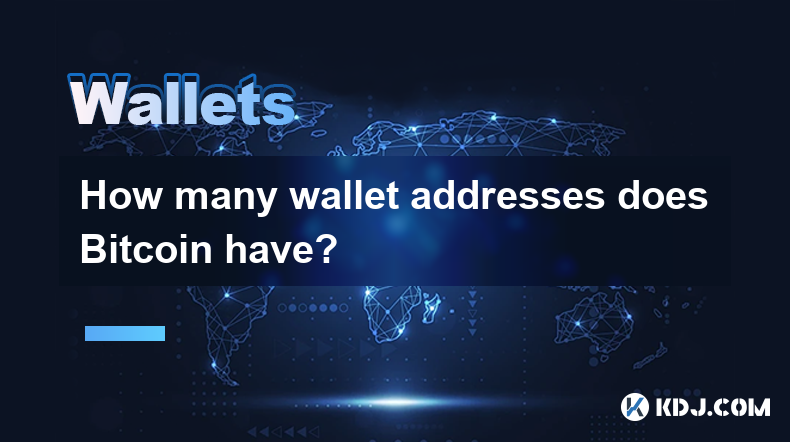
Key Points:
- Bitcoin's Blockchain Architecture and Wallet Addresses
- Understanding Types of Bitcoin Wallet Addresses
- How to Count Bitcoin Wallet Addresses
- Estimating the Number of Unique Bitcoin Addresses
- Historical Growth and Future Projections for Bitcoin Wallet Addresses
Bitcoin's Blockchain Architecture and Wallet Addresses
Bitcoin operates on a decentralized blockchain network, a public ledger that records and verifies all transactions. Each transaction involves two parties: the sender and the receiver. To facilitate these transactions, both sender and receiver need to have Bitcoin wallet addresses.
A Bitcoin wallet address is a unique identifier generated by a cryptographic hash function. It consists of a string of 26-35 alphanumeric characters and begins with the digit '1' or '3'. The wallet address serves as a public destination for incoming transactions and can be shared with others to receive Bitcoin.
Understanding Types of Bitcoin Wallet Addresses
There are two main types of Bitcoin wallet addresses:
- Public Key Hash (P2PKH) Addresses: Also known as "Legacy" addresses, these are the most common type. They are generated from a public key, which is derived from a private key.
- Pay to Script Hash (P2SH) Addresses: Also known as "Script" addresses, these provide increased security and transaction flexibility by allowing the usage of complex scripts to control the spending of funds in an address.
How to Count Bitcoin Wallet Addresses
Counting Bitcoin wallet addresses directly is not feasible due to the decentralized nature of the Bitcoin network. Instead, researchers use various estimation methods to approximate the number of unique addresses.
Estimating the Number of Unique Bitcoin Addresses
One method involves analyzing the blockchain's transaction history. By grouping transactions based on their source and destination addresses, researchers can estimate the number of unique addresses involved in the network.
Another method utilizes bloom filters, a probabilistic data structure that can efficiently check for the presence of specific addresses in a dataset. Researchers apply bloom filters to large collections of addresses to estimate the approximate number of unique addresses.
Historical Growth and Future Projections for Bitcoin Wallet Addresses
The number of unique Bitcoin wallet addresses has grown significantly over time, reflecting the increasing adoption of Bitcoin. However, the growth rate has declined in recent years as the network matures.
Future projections for Bitcoin wallet addresses are uncertain but depend on the continued growth of the Bitcoin ecosystem and the development of new technologies that facilitate address creation and usage.
FAQs:
- What is the difference between a Bitcoin wallet and a Bitcoin wallet address?
A Bitcoin wallet is a software or hardware device that stores private keys and allows users to manage their Bitcoin holdings. A Bitcoin wallet address is a unique identifier that represents the public destination for receiving Bitcoin. - How many Bitcoin wallet addresses can I have?
There is no limit to the number of Bitcoin wallet addresses you can have. You can generate as many addresses as you need to manage your Bitcoin transactions and balance. - Can I reuse a Bitcoin wallet address?
While it is possible to reuse a Bitcoin wallet address, it is not recommended for privacy and security reasons. Each transaction associated with an address is permanently recorded on the blockchain, potentially revealing information about your financial activities. - How do I find the owner of a Bitcoin wallet address?
Bitcoin wallet addresses are pseudonymous, meaning they do not directly reveal the owner's identity. However, it is possible to trace transactions associated with an address to identify potential suspects or entities involved in illegal activities. - Can I create a Bitcoin wallet address without a private key?
Yes, it is possible to create a Bitcoin wallet address without a private key using an online address generator. However, these addresses cannot be used to spend Bitcoin and are solely for receiving purposes.
Disclaimer:info@kdj.com
The information provided is not trading advice. kdj.com does not assume any responsibility for any investments made based on the information provided in this article. Cryptocurrencies are highly volatile and it is highly recommended that you invest with caution after thorough research!
If you believe that the content used on this website infringes your copyright, please contact us immediately (info@kdj.com) and we will delete it promptly.
- Christian Thompson, Managing Director of the Sui Foundation, stated that bipartisan U.S. stablecoin legislation will be a powerful mechanism for driving capital formation and retail onboarding into Web3 ecosystems.
- 2025-05-06 00:20:12
- Robert Kiyosaki Warns of the Biggest Market Crash in History and Urges Investment in Bitcoin.
- 2025-05-06 00:20:12
- Toronto, ON – May 5 2025 @ 9 AM ET – ETHToronto and ETHWomen to Commemorate the 10-Year Anniversary of Ethereum
- 2025-05-06 00:15:12
- Bonk (BONK), the largest Solana-based dog-themed meme coin, is the third-fastest-growing crypto today
- 2025-05-06 00:15:12
- TAO Price Prepares for a Supply Shock — What Happens When the Bittensor Halvening Hits?
- 2025-05-06 00:10:11
- Cardano (ADA) Closing the Market Cap Gap With Dogecoin (DOGE)
- 2025-05-06 00:10:11
Related knowledge
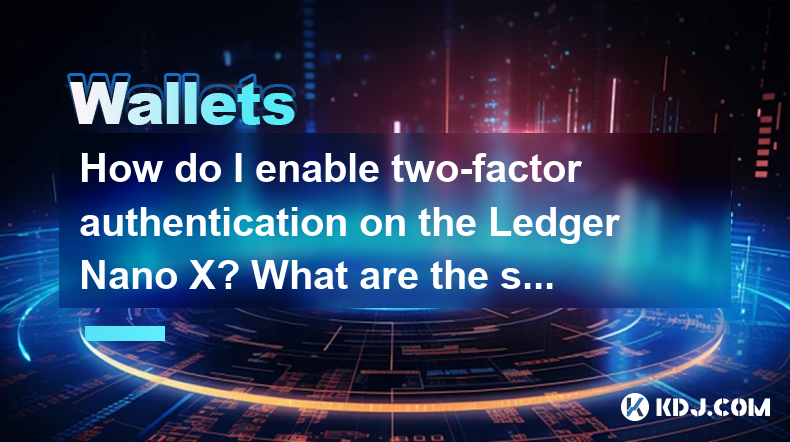
How do I enable two-factor authentication on the Ledger Nano X? What are the security options?
May 02,2025 at 09:49pm
Enabling two-factor authentication (2FA) on your Ledger Nano X is a critical step in securing your cryptocurrency assets. The Ledger Nano X offers robust security options that enhance the protection of your digital wealth. In this article, we will guide you through the process of enabling 2FA on your Ledger Nano X and explore the various security featur...
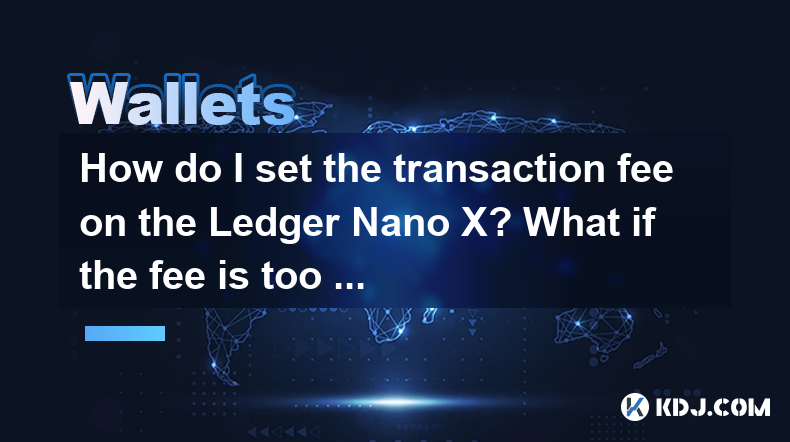
How do I set the transaction fee on the Ledger Nano X? What if the fee is too high?
May 05,2025 at 09:21pm
Setting the transaction fee on your Ledger Nano X is an essential part of managing your cryptocurrency transactions efficiently. The transaction fee directly impacts how quickly your transaction is processed and confirmed on the blockchain. In this guide, we will walk you through the steps to set the transaction fee on your Ledger Nano X, and what to do...

How do I export the Ledger Nano X transaction history? How long can the data be saved?
May 04,2025 at 07:21am
Introduction to Ledger Nano X and Transaction HistoryThe Ledger Nano X is a hardware wallet designed to store your cryptocurrency safely. It supports a wide range of cryptocurrencies and offers robust security features. One of the essential aspects of managing your cryptocurrencies is keeping track of your transaction history. The Ledger Nano X allows y...
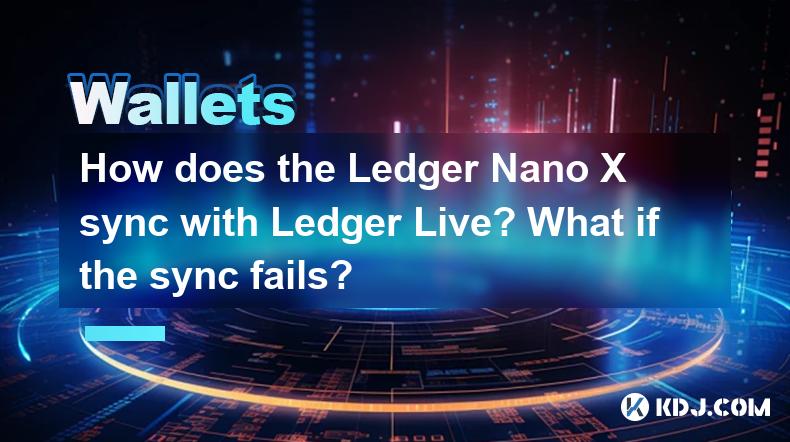
How does the Ledger Nano X sync with Ledger Live? What if the sync fails?
May 04,2025 at 12:07pm
The Ledger Nano X is a popular hardware wallet that allows users to securely manage their cryptocurrency assets. One of the key features of the Ledger Nano X is its ability to sync with the Ledger Live application, which provides a user-friendly interface for managing your crypto portfolio. In this article, we will explore how the Ledger Nano X syncs wi...

How do I send cryptocurrency with the Ledger Nano X? What are the transaction confirmation steps?
May 03,2025 at 05:01am
Sending cryptocurrency using the Ledger Nano X involves a series of steps that ensure the security and accuracy of your transactions. This process is designed to be user-friendly while maintaining the high level of security that Ledger devices are known for. In this article, we will guide you through the process of sending cryptocurrency with the Ledger...
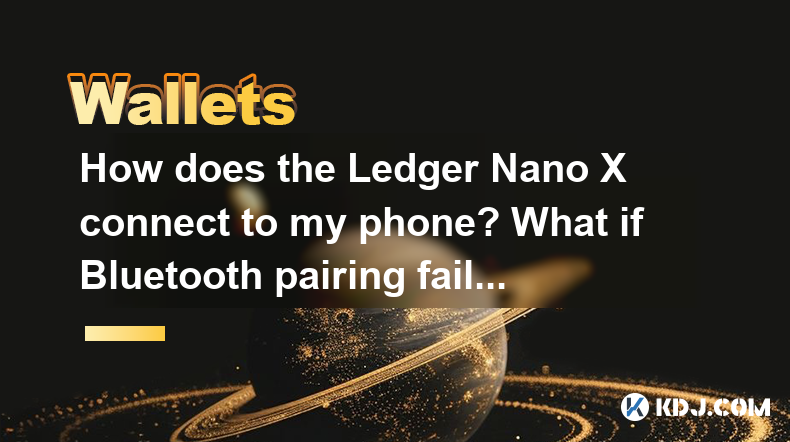
How does the Ledger Nano X connect to my phone? What if Bluetooth pairing fails?
May 02,2025 at 07:07pm
The Ledger Nano X is a popular hardware wallet designed to securely store your cryptocurrency. One of its key features is the ability to connect to your smartphone via Bluetooth, allowing for a seamless and convenient user experience. In this article, we will explore how to connect your Ledger Nano X to your phone and what to do if Bluetooth pairing fai...

How do I enable two-factor authentication on the Ledger Nano X? What are the security options?
May 02,2025 at 09:49pm
Enabling two-factor authentication (2FA) on your Ledger Nano X is a critical step in securing your cryptocurrency assets. The Ledger Nano X offers robust security options that enhance the protection of your digital wealth. In this article, we will guide you through the process of enabling 2FA on your Ledger Nano X and explore the various security featur...

How do I set the transaction fee on the Ledger Nano X? What if the fee is too high?
May 05,2025 at 09:21pm
Setting the transaction fee on your Ledger Nano X is an essential part of managing your cryptocurrency transactions efficiently. The transaction fee directly impacts how quickly your transaction is processed and confirmed on the blockchain. In this guide, we will walk you through the steps to set the transaction fee on your Ledger Nano X, and what to do...

How do I export the Ledger Nano X transaction history? How long can the data be saved?
May 04,2025 at 07:21am
Introduction to Ledger Nano X and Transaction HistoryThe Ledger Nano X is a hardware wallet designed to store your cryptocurrency safely. It supports a wide range of cryptocurrencies and offers robust security features. One of the essential aspects of managing your cryptocurrencies is keeping track of your transaction history. The Ledger Nano X allows y...

How does the Ledger Nano X sync with Ledger Live? What if the sync fails?
May 04,2025 at 12:07pm
The Ledger Nano X is a popular hardware wallet that allows users to securely manage their cryptocurrency assets. One of the key features of the Ledger Nano X is its ability to sync with the Ledger Live application, which provides a user-friendly interface for managing your crypto portfolio. In this article, we will explore how the Ledger Nano X syncs wi...

How do I send cryptocurrency with the Ledger Nano X? What are the transaction confirmation steps?
May 03,2025 at 05:01am
Sending cryptocurrency using the Ledger Nano X involves a series of steps that ensure the security and accuracy of your transactions. This process is designed to be user-friendly while maintaining the high level of security that Ledger devices are known for. In this article, we will guide you through the process of sending cryptocurrency with the Ledger...

How does the Ledger Nano X connect to my phone? What if Bluetooth pairing fails?
May 02,2025 at 07:07pm
The Ledger Nano X is a popular hardware wallet designed to securely store your cryptocurrency. One of its key features is the ability to connect to your smartphone via Bluetooth, allowing for a seamless and convenient user experience. In this article, we will explore how to connect your Ledger Nano X to your phone and what to do if Bluetooth pairing fai...
See all articles




















































































